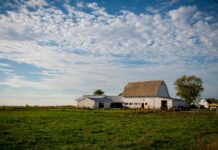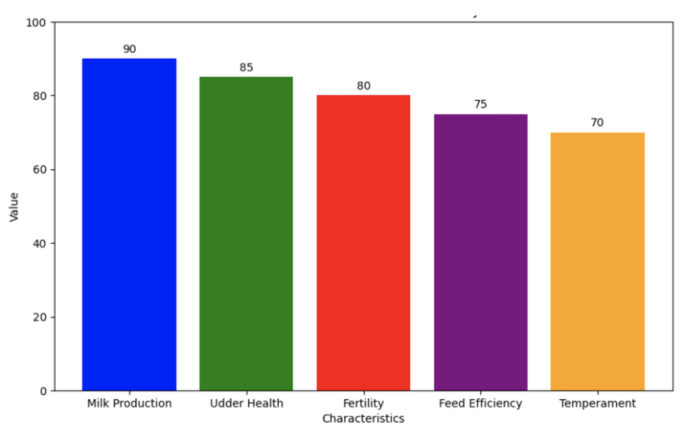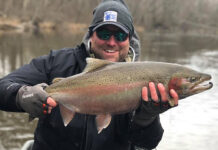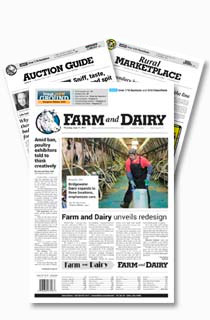Twenty-five years ago, I published a short book titled “Ripples of Change” that described the changes in the lives of my grandparents. I grew up helping them milk cows by hand, straining the milk into a five-gallon can and placing the can of milk in a milk cooler of cold water. I harvested ear corn by hand for grinding and feeding to the cattle and hauled bales of hay to the barn with my grandmother driving the truck at two speeds (stopped or fast). The hay was thrown into the hay loft and pulled to the point of stacking with handheld hay hooks (which I still have).
I wanted to know more, so, I listened to my grandmother recount their journey. They moved to Little Cake, Kentucky, from the area of Livingston, Tennessee. They farmed, helped run a family store and my grandfather helped with floating logs on the Cumberland River to get them to the sawmill. But their land was taken over by the construction of Dale Hollow Reservoir, so I never got to visit their homestead because it was at the bottom of the lake.
Not long after they settled into Kentucky, the government decided to construct Green River Reservoir, which took a portion of their new land, including where their large barn stood. I vividly remember jacking up the barn, getting some wheels under it and slowly moving it along to higher ground, ever so carefully placing it in the new location.
Artificial intelligence
Changes are ever present in our lives, sometimes as ripples and other times like tidal waves. COVID brought many changes and now references to pre- versus post-COVID. Many changes have occurred since January, and we now have to define AI as artificial insemination or artificial intelligence.
Regarding the latter AI, I have been reluctant. However, I thought I would use it for this article. I asked Microsoft Copilot to “graphically display the most valuable characteristics of a dairy cow” (Figure 1). Although the value assigned to each characteristic is somewhat relative, each trait identified has relevance. Let’s examine why each of these traits is important.
Traits
First up is milk production. Copilot indicated that this is “the most critical trait, reflecting the cow’s primary economic value,” which we certainly cannot deny. We used to focus on Holstein herds achieving 70 pounds/day of milk, then 80 and now 90. In addition, the focus has shifted more to pounds of fat and protein produced per day because these two components are the primary drivers of milk revenue. A benchmark of 7 pound/day of fat and protein is now being discussed, e.g. 90 pound/day milk with 4.4% at and 3.4% protein or 100 pound/day milk with 3.8% fat and 3.2% protein.
Next is udder health: Copilot shows this is “essential for milk quality and longevity.” We know mastitis is one of the leading causes of involuntary culling of animals from the dairy herd. The legal limit for somatic cell count of 750,000 cells/milliliter for Grade A milk has limited relevance today; most herds focus on 200,000 cells/milliliter based on the processor’s demands for quality of milk and to achieve high levels of milk production.
Copilot focused on the fertility trait based on its “importance for maintaining herd productivity.” Infertility also is one of the major causes of involuntary culling in dairy herds because we must get them to conceive again and give birth to sustain high levels of milk yield. We used to focus on a pregnancy rate of 21% as a benchmark, but now our aim is a 25 to 30% pregnancy rate.
For feed efficiency, Copilot explained this value as it “indicates how well a cow converts feed into milk.” Feed is the highest cost of milk production, thus its cost is key to farm profitability. We typically focus on feed efficiencies of 1. 4 to 1.6 pounds of milk per pound of feed. We also focus on management of income over feed costs and base some voluntary culling decisions on when cows are not producing enough milk revenue to pay for the direct cost of production. The Dairy Margin Coverage program is a risk management program to pay producers when the difference (margin) between the national price of milk and the average cost of feed based on the prices for alfalfa hay, corn, and soybean meal falls below a certain level. Feed efficiency is now included in the genetic evaluations for sires.
Copilot justifies temperament as it “affects the ease of handling and overall farm safety.” We can’t deny its importance, but the top five? During a research trial on a commercial farm a few years ago, my graduate student was assisting in the moving of some dry cows out of a free-stall pen. With no warning, she was charged by one of the cows; fortunately, she escaped into a free stall to avoid major injuries. The farmer decided the animal no longer belonged on their farm. In recent work at the University of Guelph, researchers have identified the importance of understanding cow personality traits relative to feeding systems and the use of precision technology, including automatic milking systems.
Change is one constant in our lives. Within the dairy industry, we must continue to find ways to improve animal production systems and food processing, including how artificial intelligence can be of assistance.













